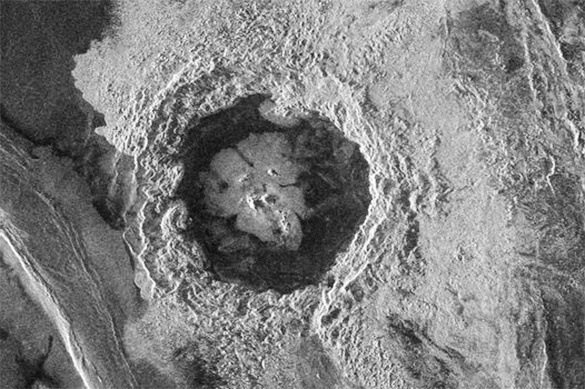Continents found on Venus
Scientists have refuted a theory that explains why the Earth has not become a "hell planet," like Venus. Previously, it was believed that there were no tectonic processes on Venus that control the movement of the planet's crust. However, scientists discovered whole continents on the surface of the cloudy planet.

The average temperature on the surface of Venus is 500 degrees Celsius. The atmospheric pressure at the surface of Venus exceeds that of the Earth 92 times. The whole planet is enveloped in clouds of sulphuric acid.
Tectonic processes help the mantle to cool, thus losing energy on the movement of plates. As a result, the optimum temperature is maintained. This is what happens on Earth as well.
Until recently, it was believed that such processes do not take place on Venus. According to scientists, the planet was accumulating thermal power in its bowels before it exploded in the form of volcanic eruptions all over the planet. The volcanoes released enormous amounts of sulfuric acid and carbon dioxide thus creating poisonous clouds around the whole planet.
Scientists from the University of Oslo (Norway) found mini-continents on Venus. The researchers found so-called "coronae" on the surface of Venus. "Coronae are volcanotectonic features unique to Venus." More helpfully, they're largely circular features, hundreds to thousands of kilometres across, with an elevated bulge at the centre. The centre is dominated by volcanic rocks, while the edges of the coronae are defined by ridges and a deep trench. The trench is reminiscent of areas where tectonic plates are being subducted on Earth, though nothing about the rest of the feature is at all similar," the research paper said. The ridges indicate that we have had erroneous ideas about the lithosphere of this mysterious planet.
In addition to the coronae, the scientists found many ditches and cracks that cover almost the entire surface of the planet. Now the information about the structure of the planet will have to be revised.
In late January, it became known that US scientists would participate in Venera-D project in cooperation with Russia to study the second planet from the Sun.
Scientists currently consider a possibility to install several observation stations on the surface of Venus that would transmit information about the planet to Earth. Russia plans to launch its probe to Venus in 2026-2027.
Even though Venus is believed to be a planet of hell, NASA researchers believe that the idea to colonise Venus is not so hopeless as it may seem. They suggest settling future colonists in airships that would float at an altitude of 50 kilometres above the surface of the planet, where atmospheric pressure will be comparable to that of the Earth.
However, temperatures at such altitudes would still be too high - about 75 degrees Celsius. Yet, it will still be possible to maintain comfortable conditions inside solar-powered airships.
Pravda.Ru
Read article on the Russian version of Pravda.Ru
Subscribe to Pravda.Ru Telegram channel, Facebook, RSS!


